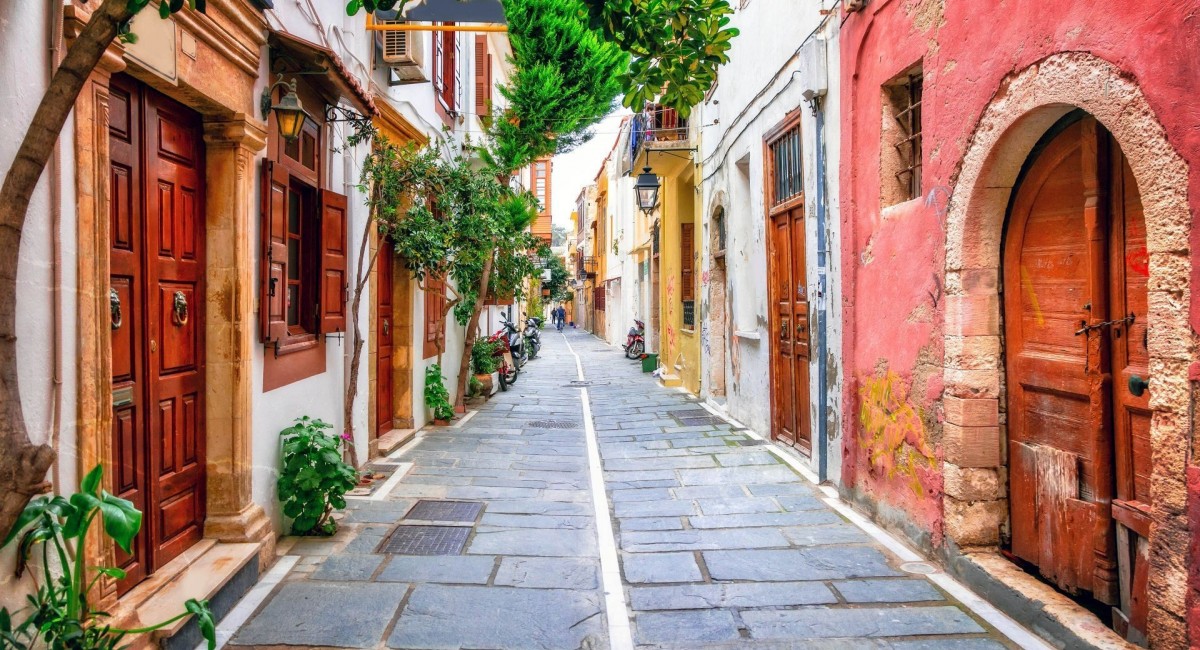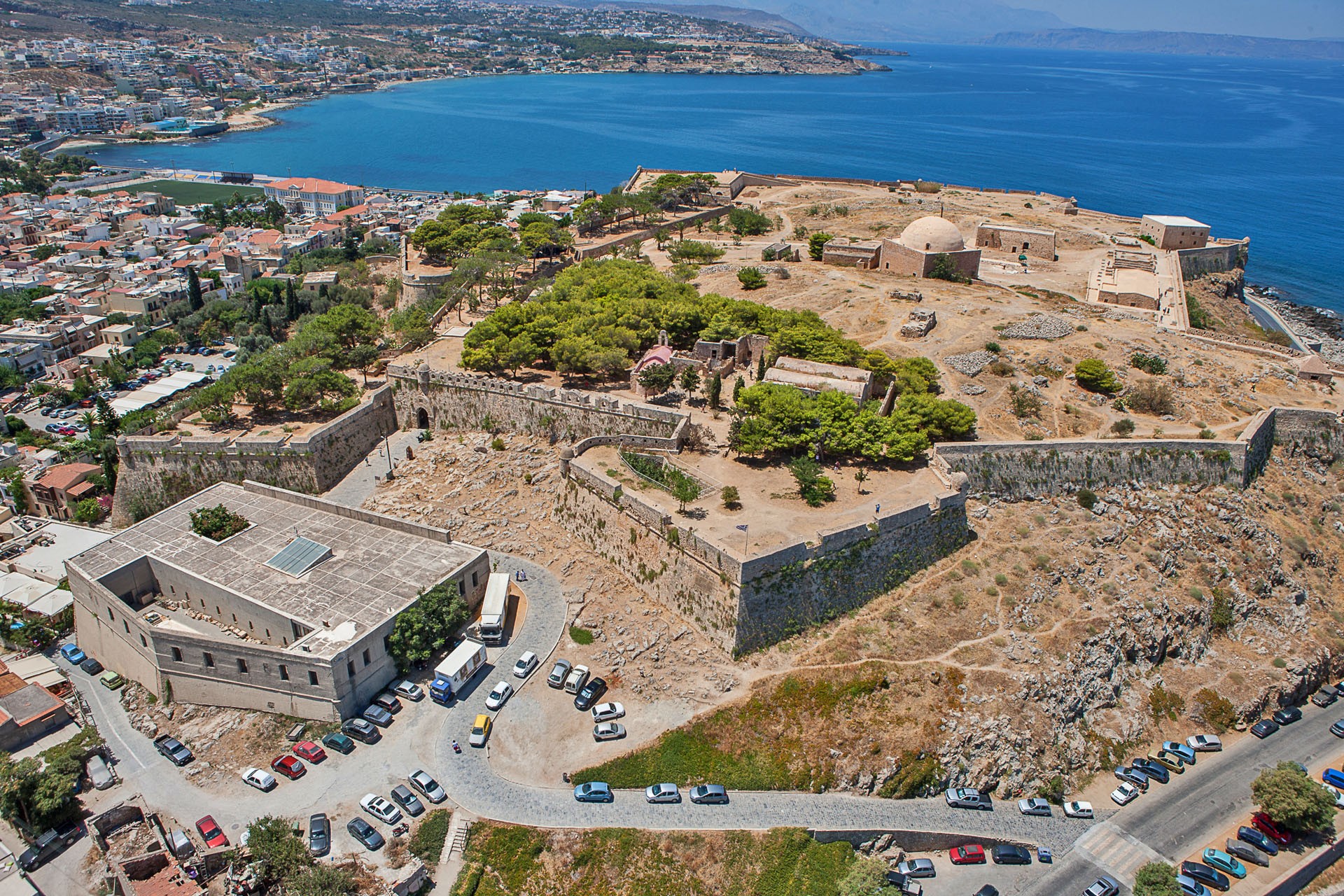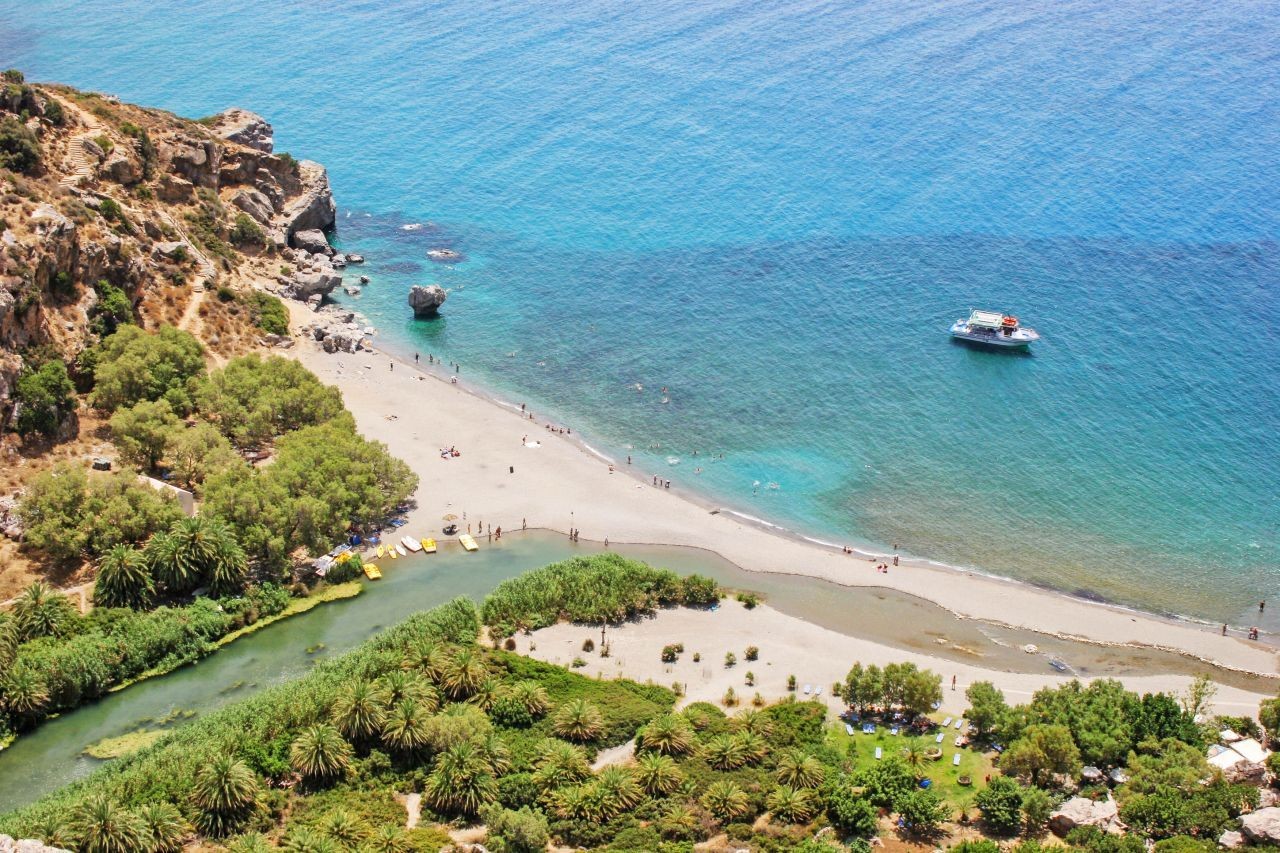GETTING TO KNOW RETHYMNO

Interesting facts about Rethymno
- The long history of Rethymno is traced back to the Neolithic years where a plethora of archaeological findings including coins, signs and more were discovered.
- The presence of the legendary pirate Barbarossa in the city in 1538 was quite important for Rethymno.
- The flourishing period of Rethymno begun in the early 16th century highlighting the history of the city, a unique blend of Cretan and Venetian culture; the city was almost entirely rebuilt by the Venetians!
- Today, Rethymno is one of the best-preserved towns in Crete that maintains its aristocratic character, with a plethora of elegant buildings from the 16th century.
- The Fortezza is built on a hill called Paleokastro (meaning "Old Castle"), which was the site of ancient Rhithymna's acropolis.
The city in a few words...
Rethymno, capital of the Prefecture by the same name and the administrative and commercial centre for the surrounding area, is the smallest of the historic cities of Crete. The picturesque town has been untouched by earthquakes and has retained its blend of Eastern mystique and Western grandeur. There are numerous venetian houses and churches; the latter were converted into mosques during the period of Turkish rule. Clustered around its Fortezza (fortress), Rethymno will make an immediate and lasting impression on visitors, to which its disused minaret will undoubtedly contribute. Rethymnon’s topography is full of interest as well. There are mountains and natural wonders, like amazing caves. And there are cultural treasures, such as two of the most famous monasteries on the island. Some of Crete’s best known villages are here, too, and also some of its very finest beaches. And the capital city is enchanting. Just wander in its old town and you'll understand!
What's worth a visit in Rethymno?
- Fortezza castle
The Venetian castle of Fortezza is a unique monument dominating on the hill of Palaiokastro, in the heart of the city and is regarded as a landmark of Rethymno. The construction of the castle started in 1571, when the need for protection against the pirates of the Aegean became urgent. It includes a number of well maintained buildings, a church, a hospital, shelters, as well as residencies. Fortezza hosts cultural events every summer that attract numerous locals and tourists.
- Archeological Museum
Located in front of Fortezza’s central gate, the Archaeological Museum of Rethymno was established in 1887. It hosts a rich collection of findings, from vessels, tools, weapons and ceramics to idols, coins, sculptures and jewelry, which date back to the Minoan, the Classical, the Hellenistic and the Roman period. The museum is open from 8.30 am until 3 pm, every day except for Mondays.
- Old Town
The old city of Rethymno is the result of the fusion of the eastern Turkish elements with the Venetian architecture of the Renaissance. The visitor passes by a number of Venetian and Turkish sights, temples and public buildings. The atmosphere of the old city and its narrow streets narrates the rich history of the place in a fascinating way.
- Venetian Harbour
Rethymno’s compact historic harbour is chock-a-block with tourist-geared fish tavernas and cafes. For a more atmospheric perspective, walk along the harbour walls, past the fishing boats to the prominent lighthouse, built in the 19th century by the Egyptians.

And around the city?
- Arkadi Monastery
The 16th-century Arkadi Monastery, 23km southeast of Rethymno, has deep significance for Cretans. As the site where hundreds of cornered locals massacred both themselves and invading Turks, it's a stark and potent symbol of resistance and considered a catalyst in the island's struggle towards freedom from Turkish occupation. Arkadi’s impressive Venetian church (1587) has a striking Renaissance facade topped by an ornate triple-belled tower. The grounds include a small museum and the old wine cellar where the gunpowder was stored. In November 1866, massive Ottoman forces arrived to crush island-wide revolts. Hundreds of Cretan men, women and children fled their villages to find shelter at Arkadi. However, far from being a safe haven, the monastery was soon besieged by 2000 Turkish soldiers.
- Eleutherna Archeological site and museum
A must-see for anyone visiting the ruins of Eleutherna is the accompanying modern museum that contextualises the ancient city through the exhibition of treasures unearthed at the site over the past 30 years. Located 3km from the ruins, and set over three rooms, the beautifully curated collection covers artefacts ranging from the early Iron Age and Minoan periods to Hellenic, Roman and Byzantine eras.
- Margarites village
Margarites is a mountain village of the prefecture of Rethymno located near Ancient Eleftherna, approximately 38 km far from the city of Rethymno. In this specific village, more and more young people chose to settle down permanently, as well as several families from countries of Western Europe.
The village had been built between two canyons of outstanding beauty by some queen of Eleftherna, Margarita, who was impressed by the stunning gorgeousness of the place, sold her expensive jewelry and gave commandment to build this settlement in her honor. Others, more ”reasonably”, connect the name of Margarites village to the existence of the homonymous flower that grows in the region. But it was probably named after “magarika” (or magarikata) meaning “clay” in Byzantine times; the other letter “r” was probably added later. Today, Margarites is the second most important pottery center in Crete, since the area is rich in clay soil and water, favoring this art. The village has at least 16 pottery workshops, each working in different style, combining modern and traditional techniques, and the guests can freely see the artists at work.
- Preveli beach
This one is certainly the most famous beach in south Crete, accepting thousands of visitors every summer. During the '60s and '70s, it was a favorite destination for the hippies. On the banks of the Grand River there is a large colony of Theophrastus palm trees, which give the region a sense of a tropical landscape. The river, forming a small lake, 500m long, before emptying into the sea, has water all year round. You can walk along the river, under the shade of palm trees and other trees, and start ascending in the beautiful canyon. You can swim in the cold ponds formed in the gorge.
A big fire in 2010 burnt almost everything of this paradise, but paradoxically the palmgrove recovered most of its damage. At the exit of the river, a sandy beach with pebbles and sand is formed, with sea water being very cool due to the river. In the eastern part of the beach, there is a beautiful rock reminding of a heart. The beach is not well organized because the area is protected, without any umbrellas.

What to eat in Crete
The Cretan Diet is famous and some say miraculous! It is the original Mediterranean diet -tasty and nutritious, ensuring good health and long life! This type of nutrition has helped create a combination of foods and lifestyle which provides a unique diet that is highly beneficial, it prolongs life and helps preventing many of the modern diseases that shorten the lives of millions of people every year in the West.
The Cretan Diet is both simple and wholesome.
It features plenty of fruit and vegetables, beans and grains in abundance, olive oil as the principal fat, moderate drinking of wine and raki, herbal teas like Greek Mountain Tea (which is said to be a "cure for everything") or Dittany of Crete (said to be an aphrodisiac)! Also, in includes honey and yoghurt, occasional use of lean red meat and low to moderate consumption of dairy foods, fish and poultry.
Come and sample its flavours on our various gourmet tours:
- Rethymno Walking & Gastronomy Tour
- Hands-on Cooking experience in a beautiful garden near Rethymno
- Wine and Olive oil Tasting with lunch at Apokoronas (from Rethymno or Chania)
Click here and prepare your notes: These are the foods you MUST try as a visitor in Crete!
